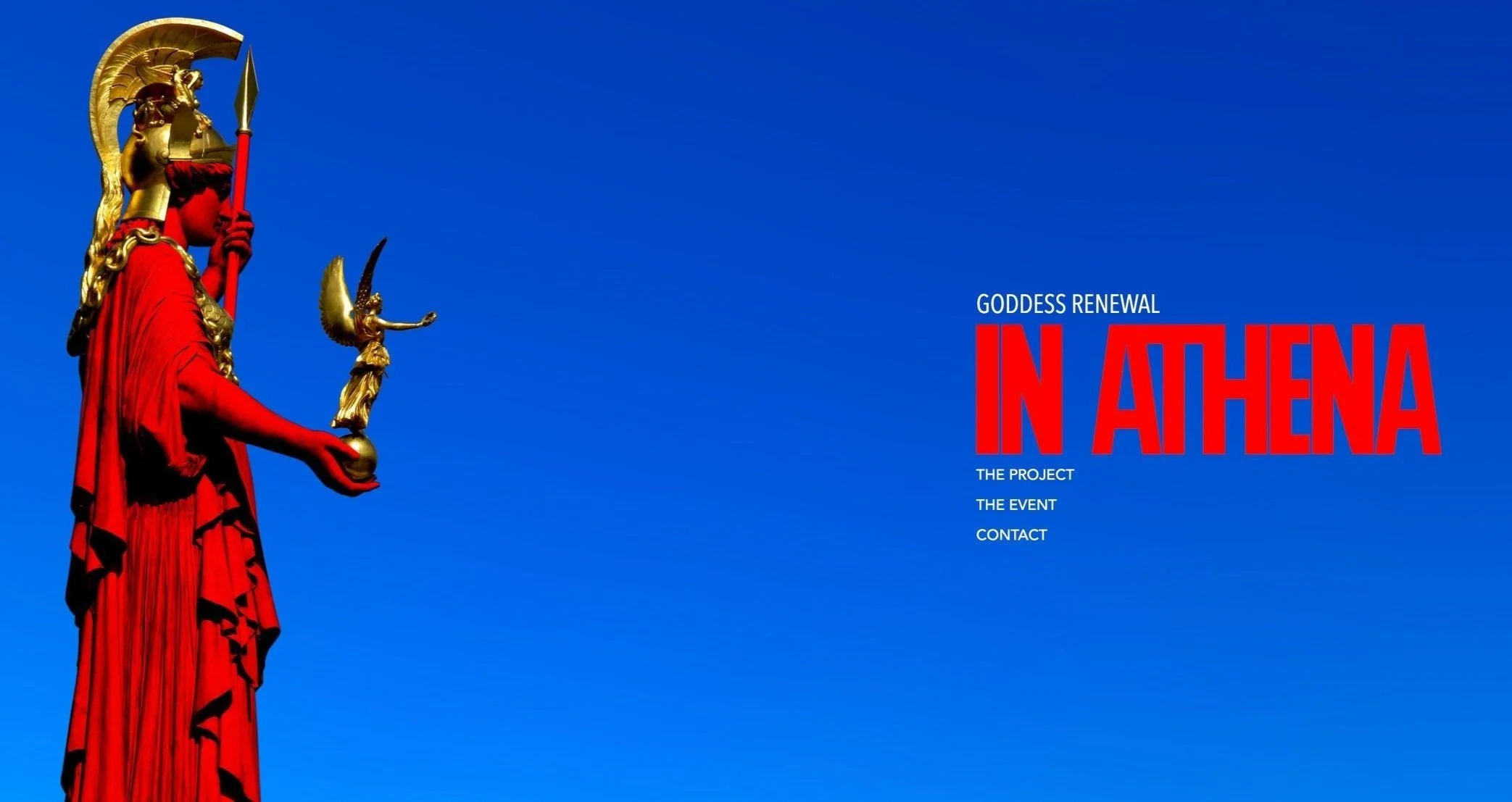IN ATHENA
… is a document created by 50 world-making communicators, asked by Klaus Jürgen Schmidt to negotiate the themes of the Goddess and the City.
Following an impromptu visit to Athens from London, in May 2015, I decided to stay, leaving London behind.
I was mesmerised and bewildered. Athens, entranced and in pain in its sea of crumbling beige, trapped in a cyclical action of resurrection and demolition. Its historical ramifications. The approaching collapse, and its symbolism. The moment needed a record and its theme was obvious to me. I feel like Athens is a Petri dish for European humanity and its observation, but this particular moment here seems crucially symbolic of the Western landscape in turmoil. Archaeological discovery, ill-timed or miscommunicated has created a profoundly slippery understanding of Athens. Like the layering of dust beneath a museum glass, facts become unclear when not paid any mind. Like many places, I do not think a hell of a lot has changed here in a very long time.
We exist in the dust bowl of Athens, below the Acropolis. We are social and decadent but we are distrusting and very worried. We occupy where we can beneath the Parthenon, once the house of the Colossus of Pallas Athena, long vanished in antiquity, now at large, embedded within our collective consciousness as the iconic virgin goddess. Athena, the weaver of possibilities birthed from a migraine headache.
In Athena observes the goddess within this namesake locality: It’s a collection, a new world manifesto and a time capsule containing an assemblage of personal opinions, artworks, manifestations and expressions confronting her idealism. I asked a broad and diverse group of 50 world-making communicators who I respect and admire. A consortium from art, comedy, theatre, astrology, illustration and journalism to fashion and design, music and anarchy – to question and imagine, thus rooted in many forms of opinion is the document In Athena.
It wants to provoke a more realistic idea of womanity, of what a goddess is and why ultimately - the word is a misnomer. If the goddess was a male-invented, fetishised idea of what a woman is supposed to be, IN ATHENA smashes that statue as it rebirths everywoman. To celebrate this, I wanted the spirit of the document to be one of everyness, which as a word doesn’t exist but we understand that its meaning must be one of inclusivity and fairness.
The idea of a goddess is terrifying as it is fleeting: it is a simplistic and dangerous objectification invented by men, where women by comparison are perpetually inferior to their all-powerful ideal image. These were representations of women in sanctuary - we have no evidence of civic or domestic sculpture representing women in isolation behind her husband’s closed doors. It was behind these doors that her aspirations came to an end. There is connection between this impossible representation and the distorted image of women in Greek Tragedy. Patronising and misogynist, Greek Tragedy presents women that are either hysterical, or sinful, or crazy, or murderous, or all at once. Watch, as righteous and intelligent Antigone is buried alive by her uncle in an act of patriarchy.
Like in a modern gay sauna mirroring the ancient Platonic Greek symposium, there is exclusion for women from participation in opinion, pleasure and invention. Women in classical antiquity were absent from the definition of what their divine image is. Female statues in antiquity were documents declaring the expected notions of the race of women, and are more like aesthetic idealisations rather than factual depictions of women at life. This seems archaic but it directly mirrors modernity in many ways. Now still, our imagination fails us by proxy. The Goddess as she appears in layered references in fashion and pop culture is crushingly off the mark. When we envision a divine Whitney Houston, Marilyn Monroe or Maria Callas as evening-gowned and in poise, we also know this image does not reflect their realities, yet it serves our consciousness and still conjures an accepted fact. The question of whether divinity is linked to oppression or marginalisation becomes apparent. Divine is a state of mind associated with the world of drag and female impersonation or appropriation, it loses that meaning for many who observe it and more so for those who inhabit that state. Human imaging and visual female reputation in particular need a revisit - and considering that many of their invented origins are Athenian, there is no better place to start than here - now - IN ATHENA.
KJS, Athens 2016
CONTRIBUTORS Emma Wyman - Nkisi - Ibrahim Nehme - Cantina Social - Andre Walker - Telémachos Alexiou - Adriano Costa - Vittorio Visciano - Alessandro Manzi - This is That - Viron Erol Vert - Kiriakos Spirou - Max Allen - Amateurboyz - Martine Rose - Klaus Jürgen Schmidt - Andreas Angelidakis - Meera Sleight - Eliana Scognamiglo - Bernard Prince Thomas - Princess Magnifique - Maurizio Esposito - Cassia Tabatini - Lau Neves - Stefanie Biggel - Hamish Ruaraidh Wirgman - Ilaria Casalini - Jonas Hegi - Alaa Awad - Marilia Stagkouraki - Evripidis Sabatis - Vassilia Kaga - Jérôme Sprenger Sèvegrand - Amanda Camenisch - Macsiotti - Ladyskollie - Laura Windvogel - Michael Ikonomou - Natasha Papadopoulou - Juliette Cambell Golding - Peter Baur - Pinelopi Gerasimou - Tschan - Victoria Sin - Roubi Roubi Roubi - Toyin - Amantopet - Alexandros Pissourios - Kate Berlant - Katerina Kana - Yorgos Sapountzis - Jenkyn Van Zyl - Zoe Mavroudi






